Little brother: the most affordable DJI Phantom 3
Hi GT! We recently reviewed in detail the quadrocopter DJI Phantom 3 Pro, equipped with a 4k2k camera and a round price tag. Then in the comments asked about the differences between the different models of DJI, and, rightly so, the younger model Phantom 3 Standard aroused the greatest interest. Well, you ordered, we wrote!
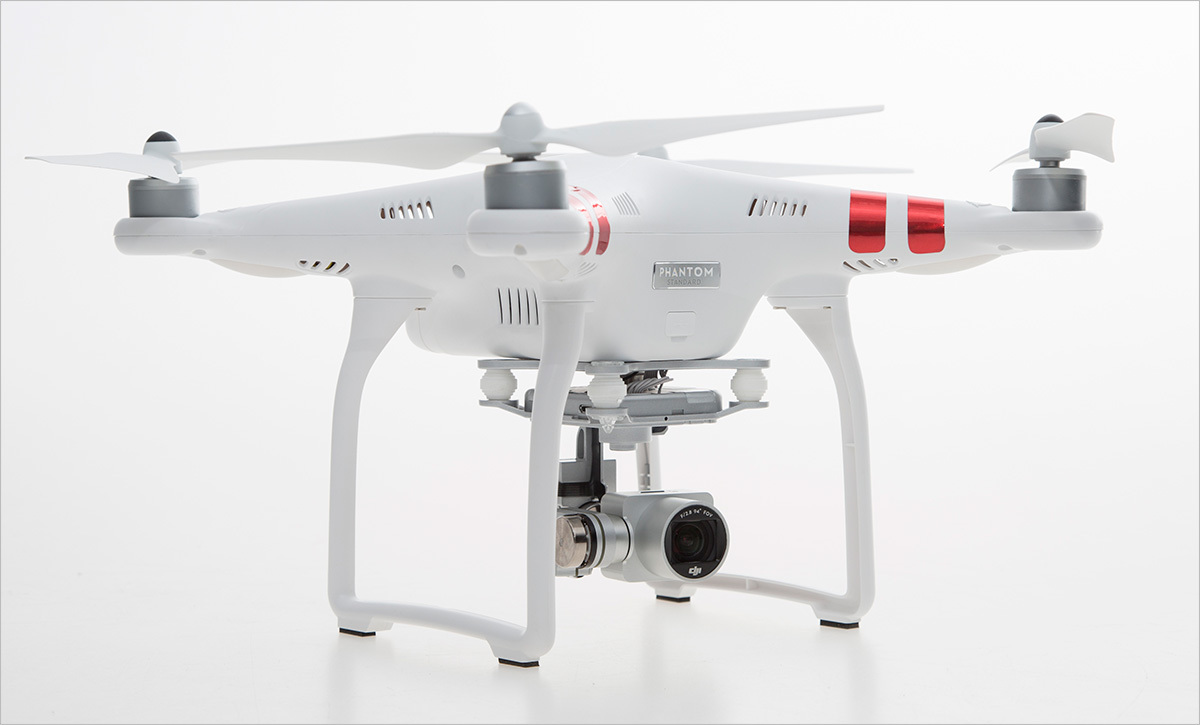
Meet the analysis of the entire generation of Phantom 3, a comparison of models, their features and a small overview of the most affordable version of the Phantom 3 Standard.
The addition to the popular Phantom 3 series happened not so long ago: the new model Phantom 3 Standard (P3S) differs from its “older brothers” by an acceptable price - $ 799 / € 919 and new features that made it available to a wide audience. We were able to compare the new product with the predecessors Phantom 3 Professional (P3P) and Phantom 3 Advanced (P3A).
')
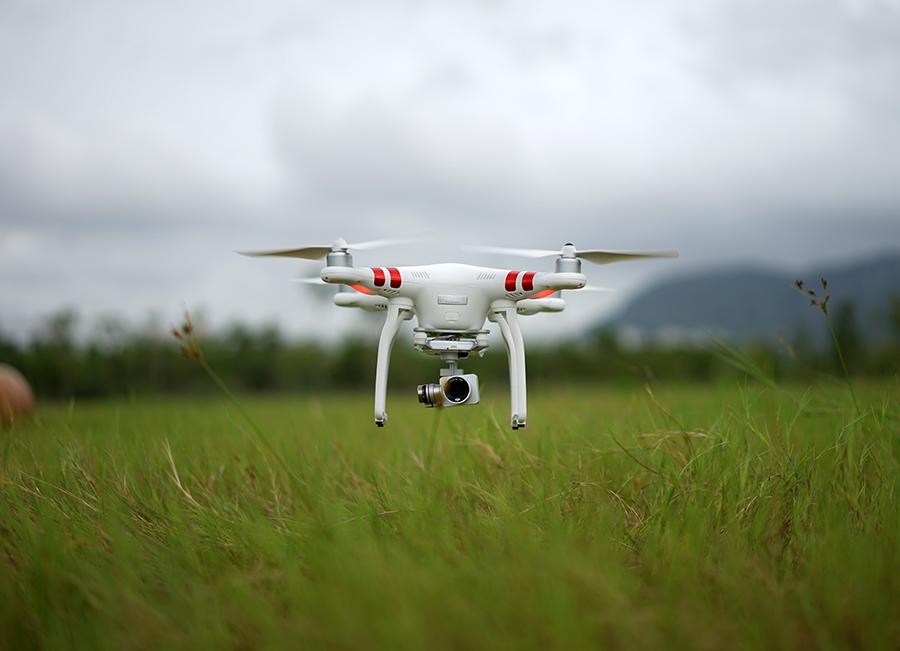
DJI obviously learned from Apple. And the minimalist design, and content, all to match the giant of Cupertino:

Inside - the quadcopter itself, radio equipment, a set of screws (and a small repair kit with the tool) ...
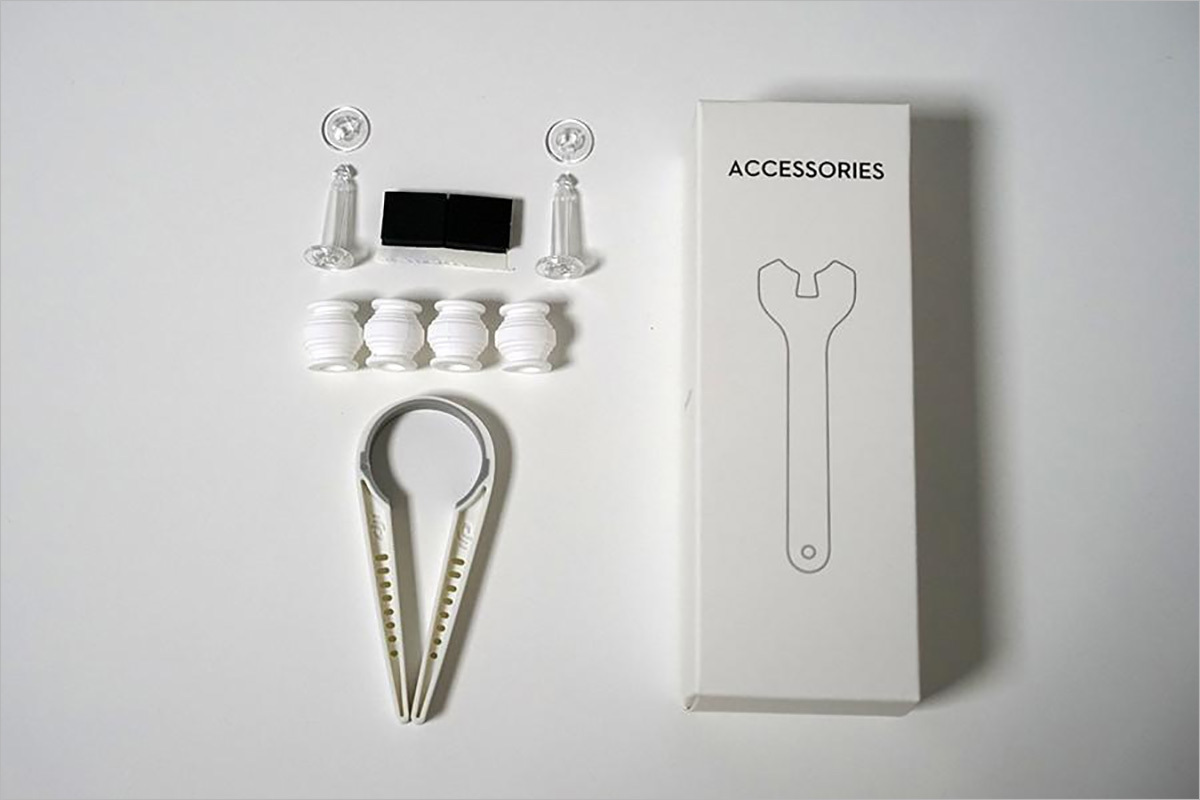
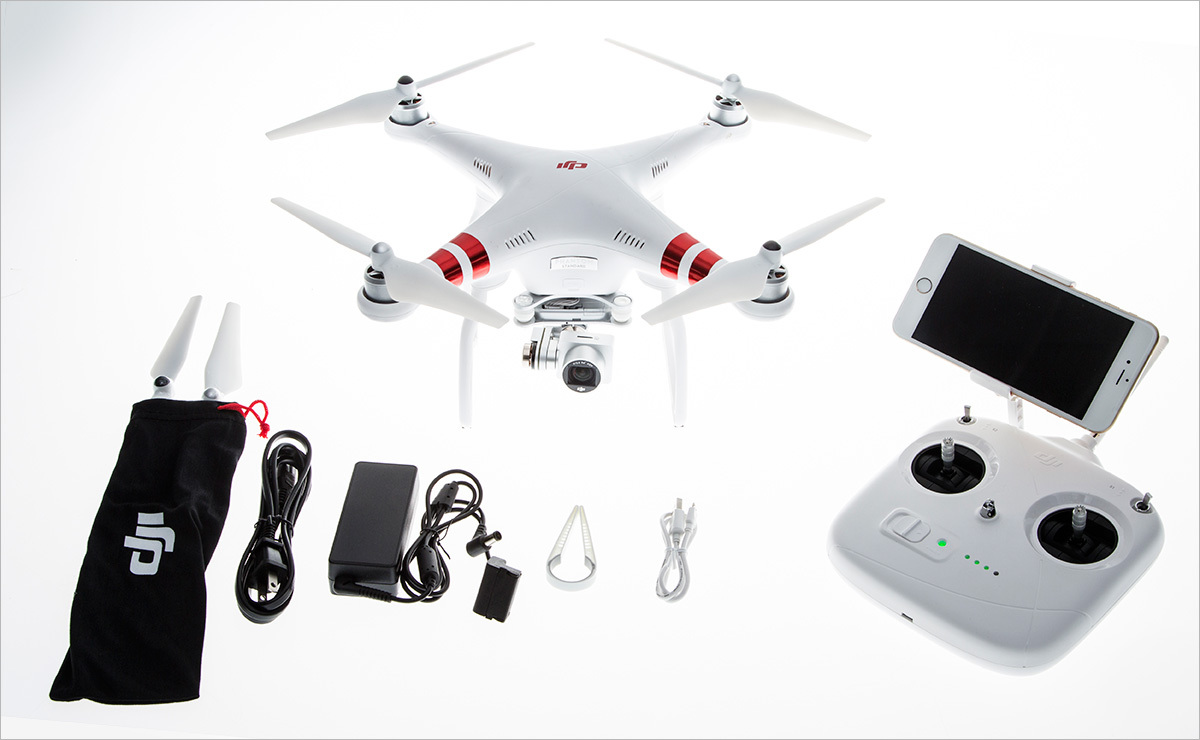
... And, of course, the charger with the user manual. For, in fact, the beginning of the flight is enough to install the screws, but familiarity with the quadcopter should begin with reading the instructions, in order to avoid any falls of Gidenburg in small scales.

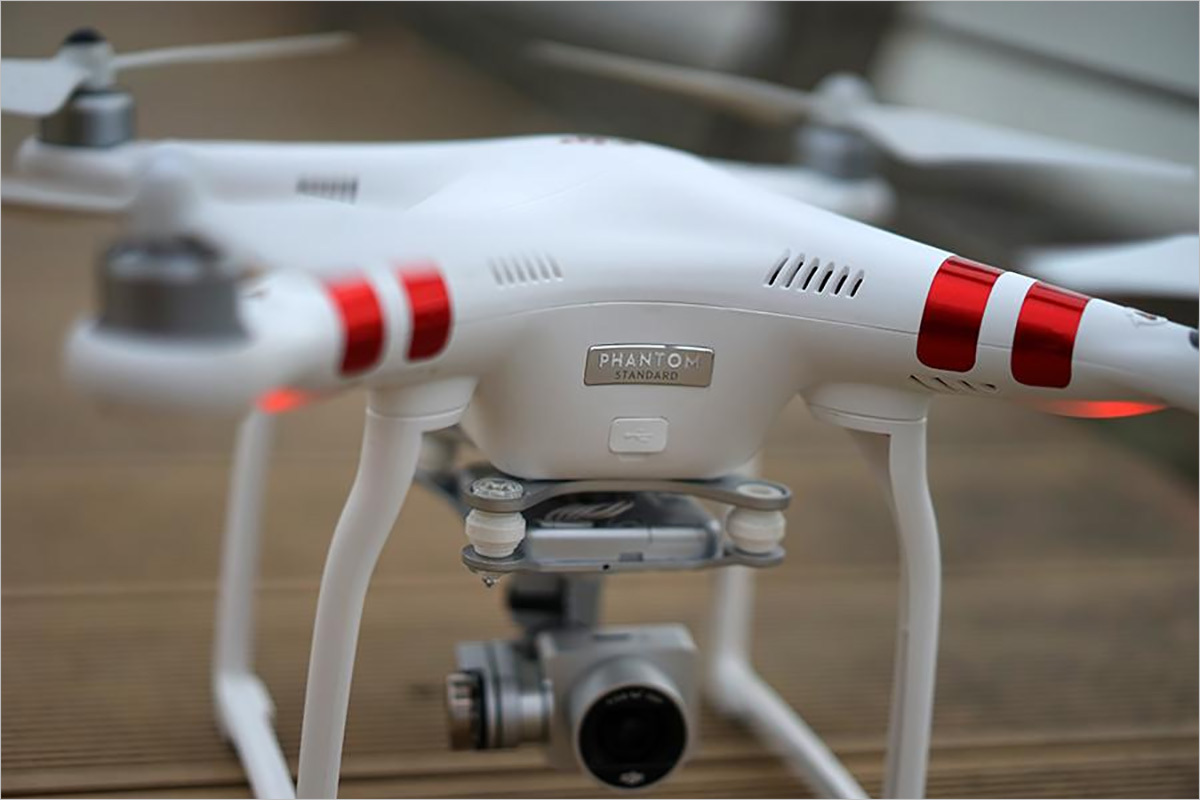
The P3S model differs from the other products of its series in the absence of the technology of the optical orientation system and the GLONASS module. The refusal of additional electronic electronics allowed us to simplify the drone itself and the control panel, almost without affecting the basic operational characteristics.
The remote control for the P3S model is somewhat more compact and easier when compared with the similar controller of the P3P and P3A models. The basis (that is, the case and part of the filling) was borrowed from the remote control of the old version of DJI Vision +, so with ergonomics and capabilities everything is fine.
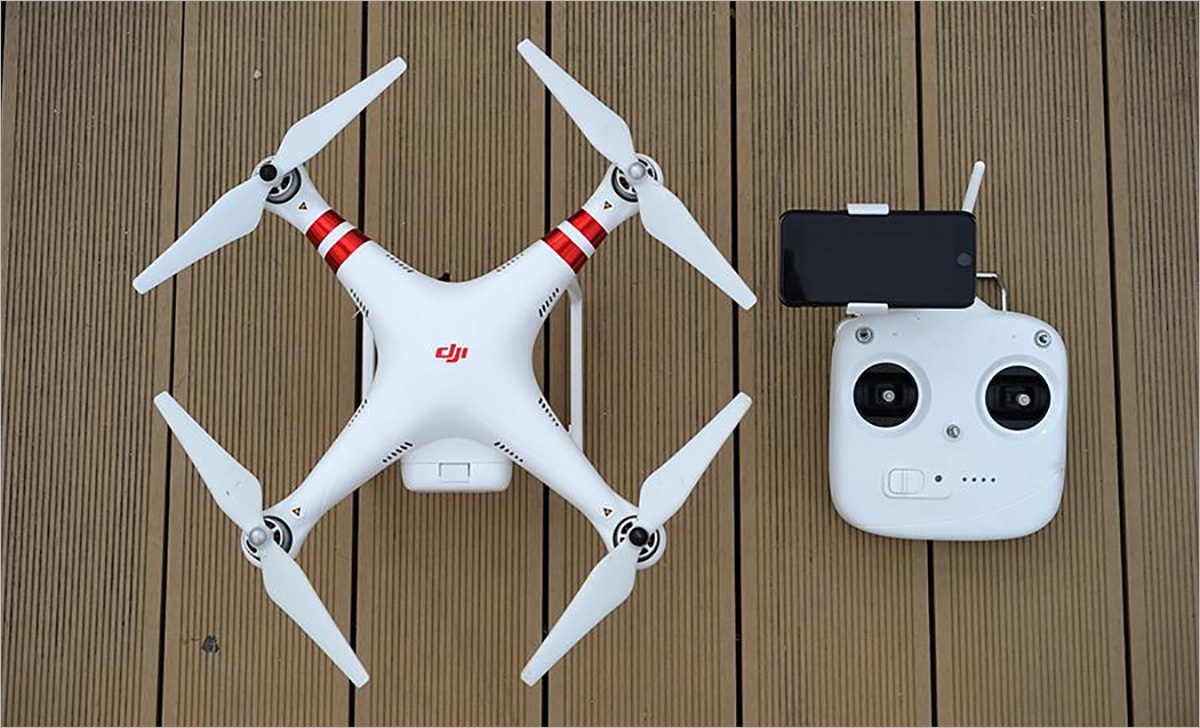
The sticks, switching buttons and side wheels for controlling the suspension remained in place, but the “stand”, the method of attaching and connecting the smartphone to the console, and the number of antennas reduced to one changed:
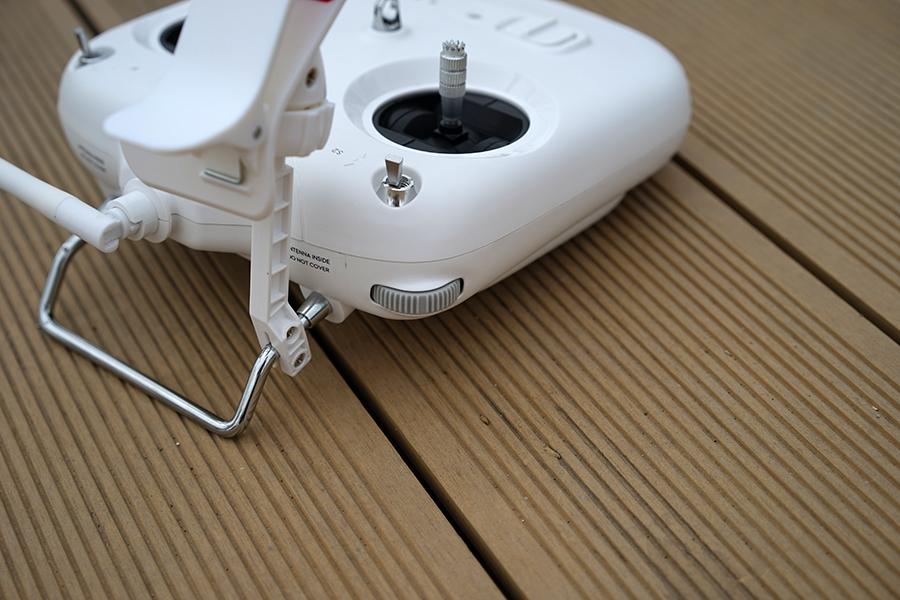
Unlike the P3P and P3A models, you do not need to use a USB cable to connect the remote control to a mobile device, wireless Wi-Fi connection is used.

The P3S model supports 720p HD video transmission in real time at a distance of up to 1 km in the FCC version and up to 500 m in the CE version. The advantage in comparison with the Phantom 2 Vision + (P2V +) model is that the P3S remote control has a built-in Wi-Fi signal amplifier, which is connected to the remote battery. Thanks to this remote it is easier to use, because you do not need to charge the elements separately.
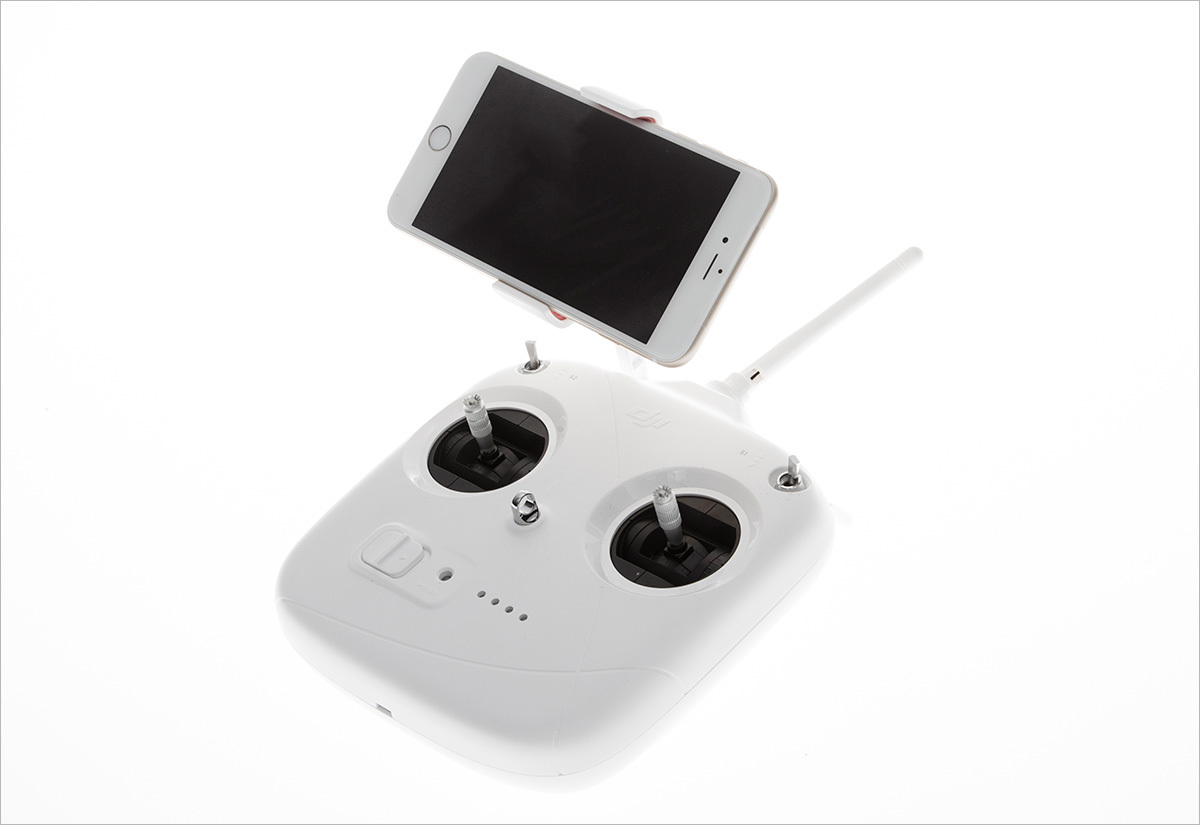
Surprisingly, in terms of the camera, the P3S model at the time of release was somewhat superior to the more expensive P3A (the currently updated firmware for the P3A equalized their capabilities in video resolution). Standard can shoot HD video with a resolution of 2704x1520 pixels, which is practically not found on devices of this level and price. Only the P3P model has a significant increase in resolution and quality of shooting (it can shoot video in 4K), but its price tag is completely different.
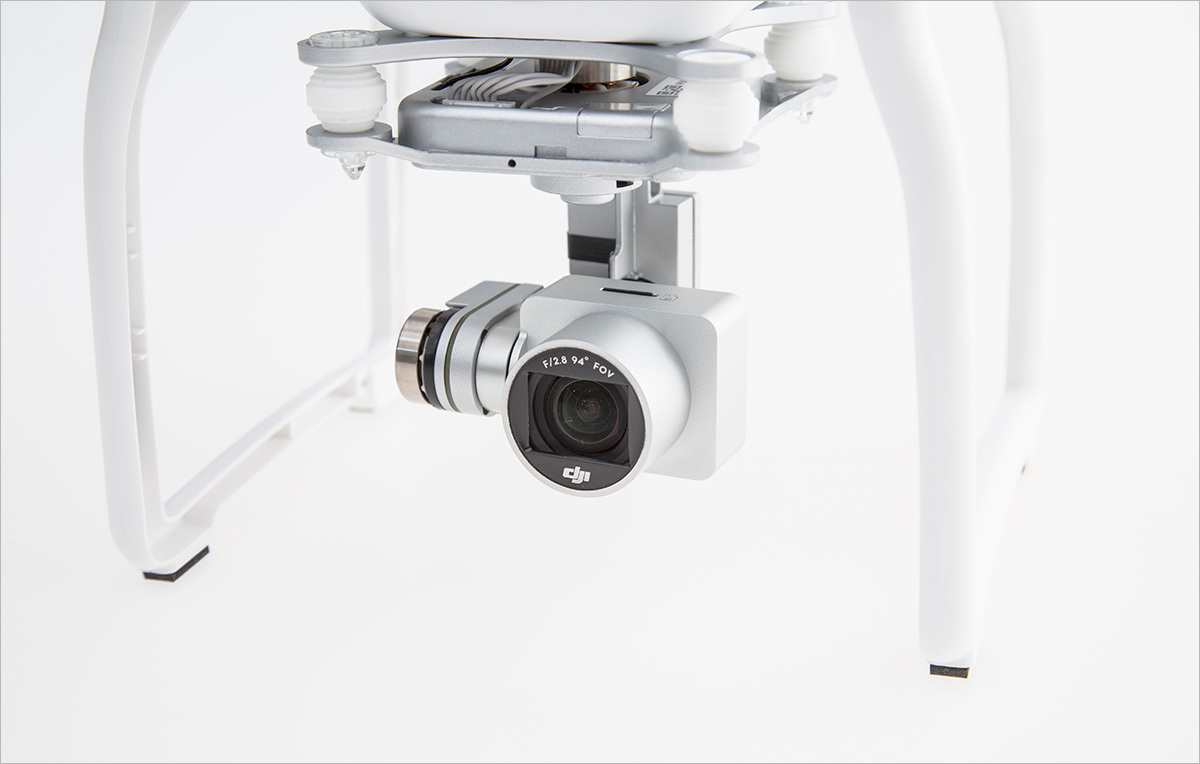
The P3S is equipped with a 94⁰ wide angle lens with a f / 2.8 aperture.
The maximum resolution when photographing - 12 megapixels in JPEG or DNG (RAW). Normal viewing angle and good optics make it possible to achieve a decent quality of shooting.
The pictures show the same scene taken in Auto mode using the P3S, P3P, P3A, P2V + and GoPro Hero 4 Black models:
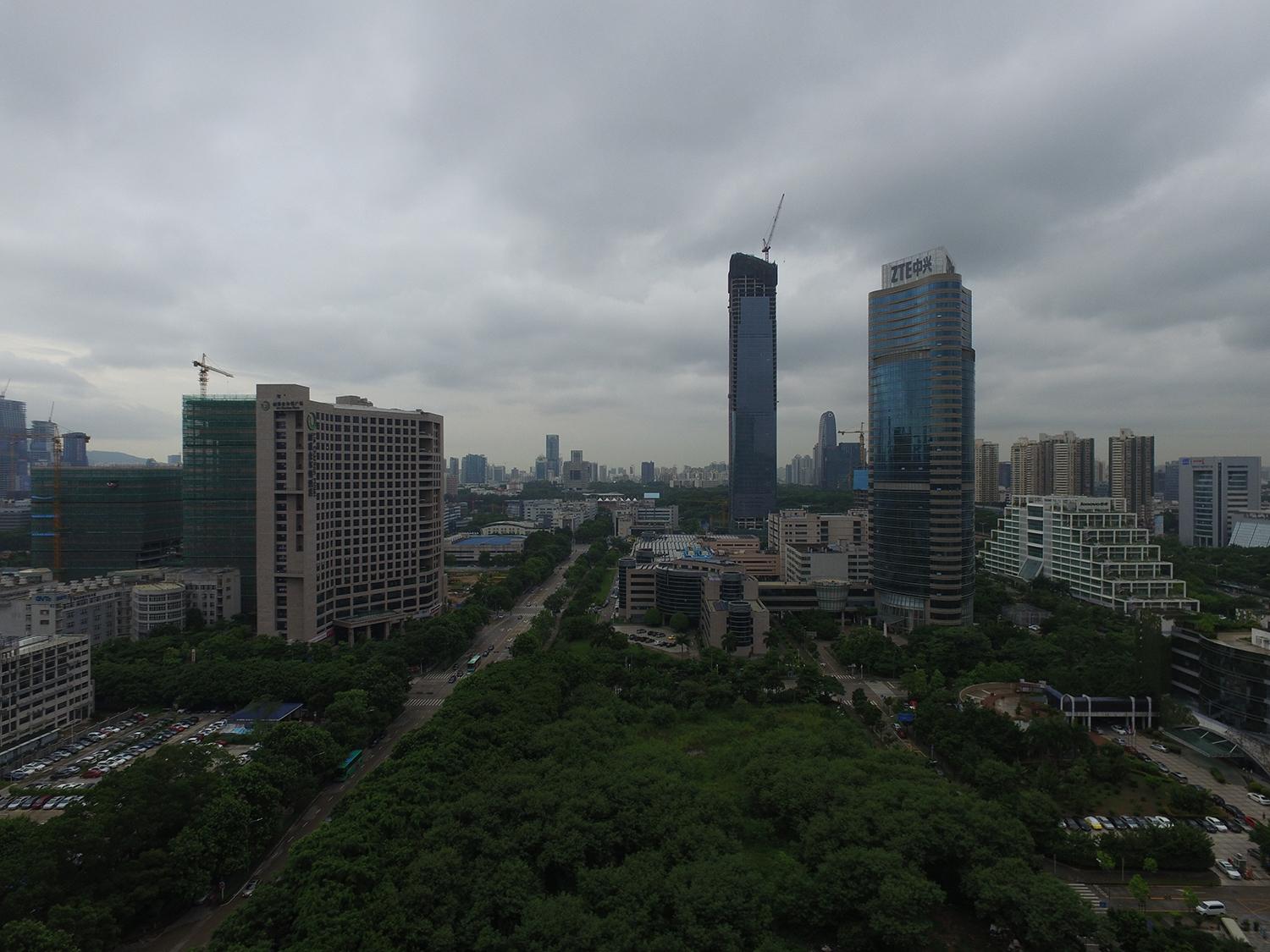
↑ P3P

↑ P3A
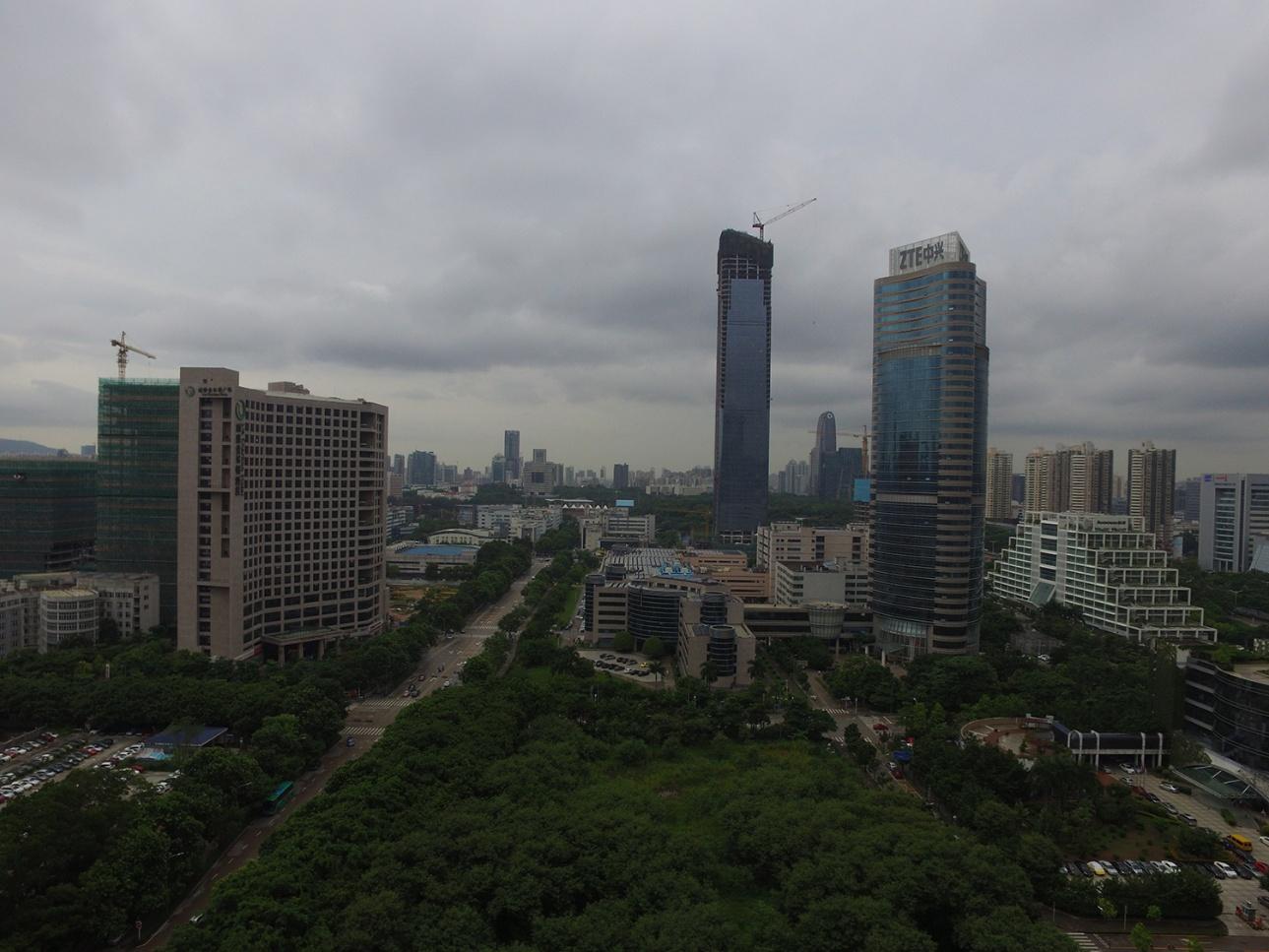
↑ P3S
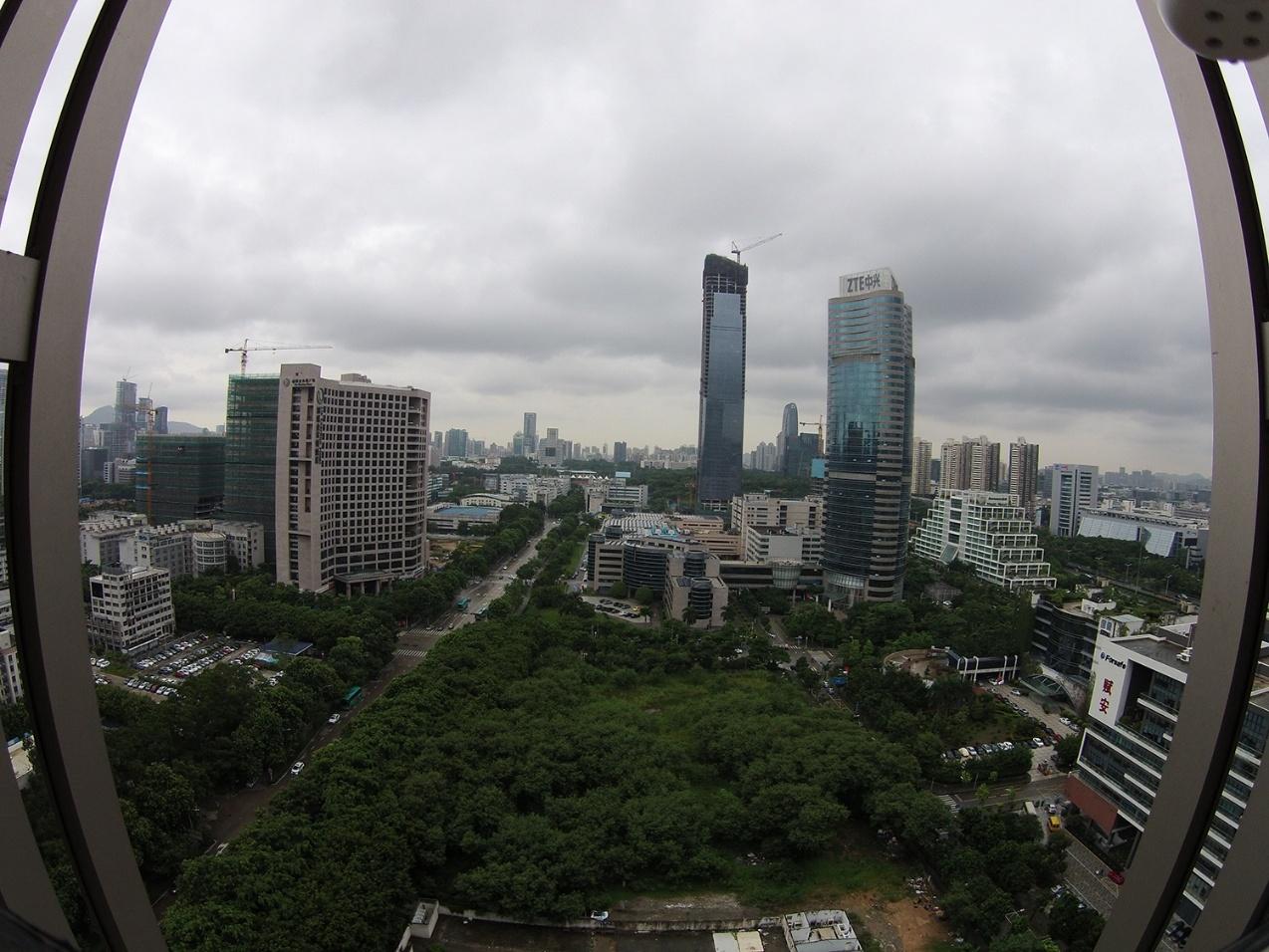
↑ P2V +

↑ Gopro Hero 4 Black
The photos taken by the Phantom 3 series cameras are designed in the same style, it’s hard to tell which picture was taken with P3S and which one with P3A, if you don’t get frames up to 1-to-1.
The drone of the previous generation and GoPro have super-wide-angle lenses, because of which both the field of view and the nature of the distortions make the appropriate adjustments to the composition, and if we take the central part of the frame for comparison with the older generation, we will see the corresponding loss in detail. In addition to the characteristic distortions, both cameras consider exposure a little differently and are prone to overexposure. And if the details can be extracted from underlights (albeit with noise) (which, given the shooting in RAW with Phantom 3, is easier than any other editor), then the potential overexposures will not extract information.
In the field of photography, the “younger” device in the lineup is almost as good as the P3P and P3A models.
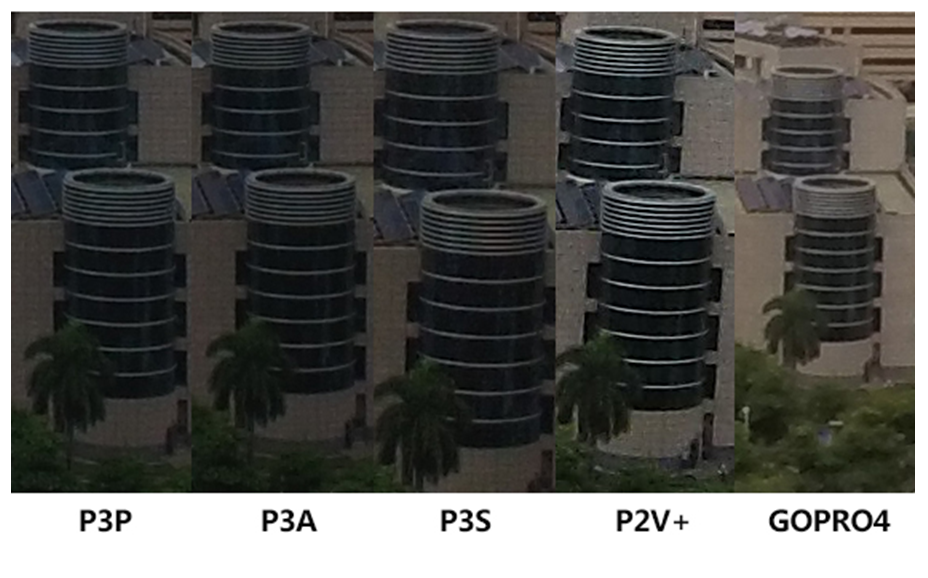
If we take the same fragment from all frames of different cameras, then the differences in quality become obvious. The image of the GoPro camera shows that the top edge of the building is blurred, and the overall resolution of the image is clearly lower than the others. A striking example is brickwork / cladding panels: their texture looks good even on the old P2V +, not to mention the P3 in various versions. In addition, the camera JPEG settings with excessive clarity spoil the texture of the P2V +, and wide-angle optics introduce additional loss in picture quality at the edges of the frame. The “Phantoms” of the third generation do not have such a problem: the bricks are visible, and with the resolution, the order, and there is no noticeable sharpe. Especially if you manually display the RAWs.
Here are some more pictures taken with the P3S:
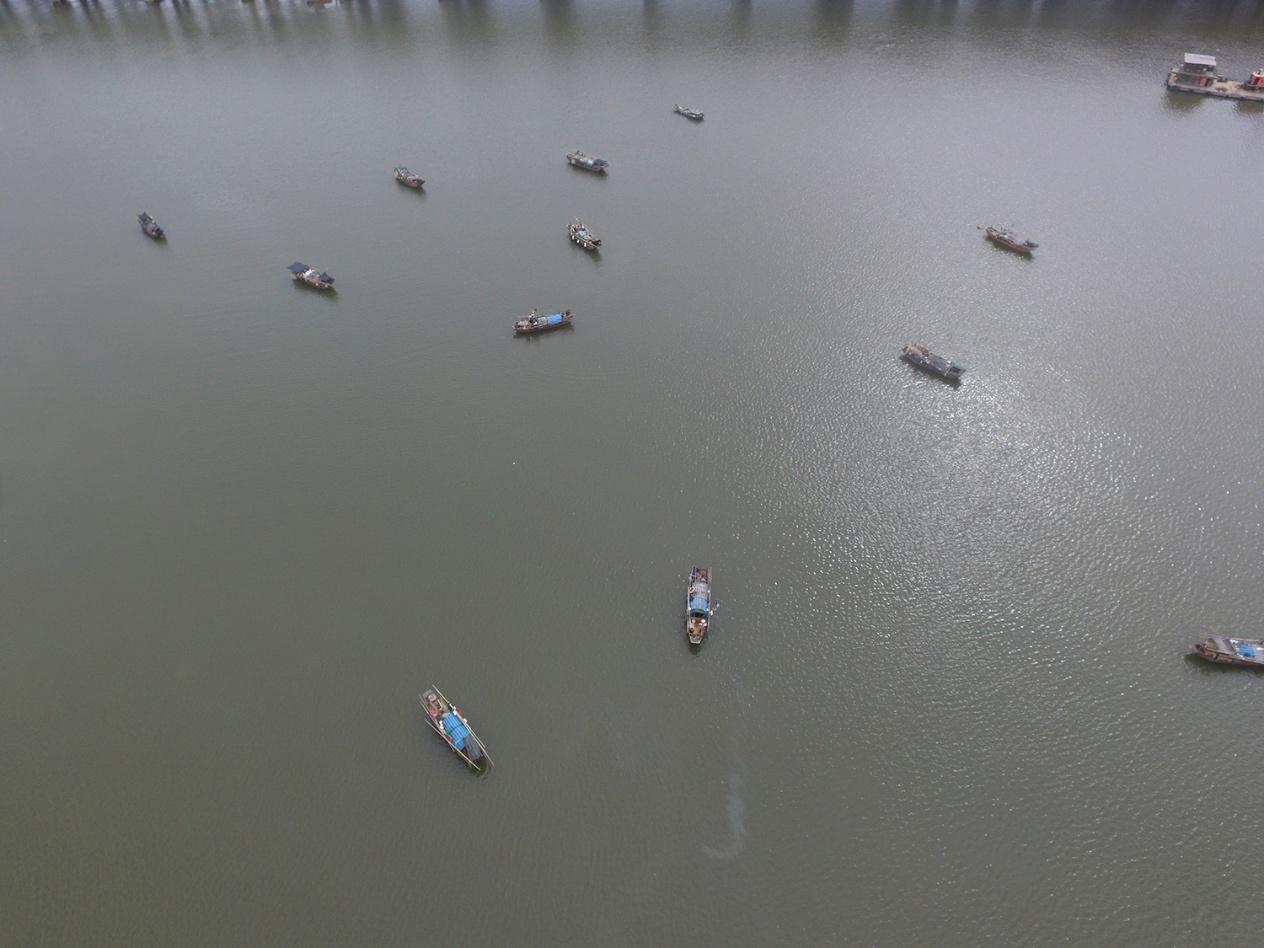

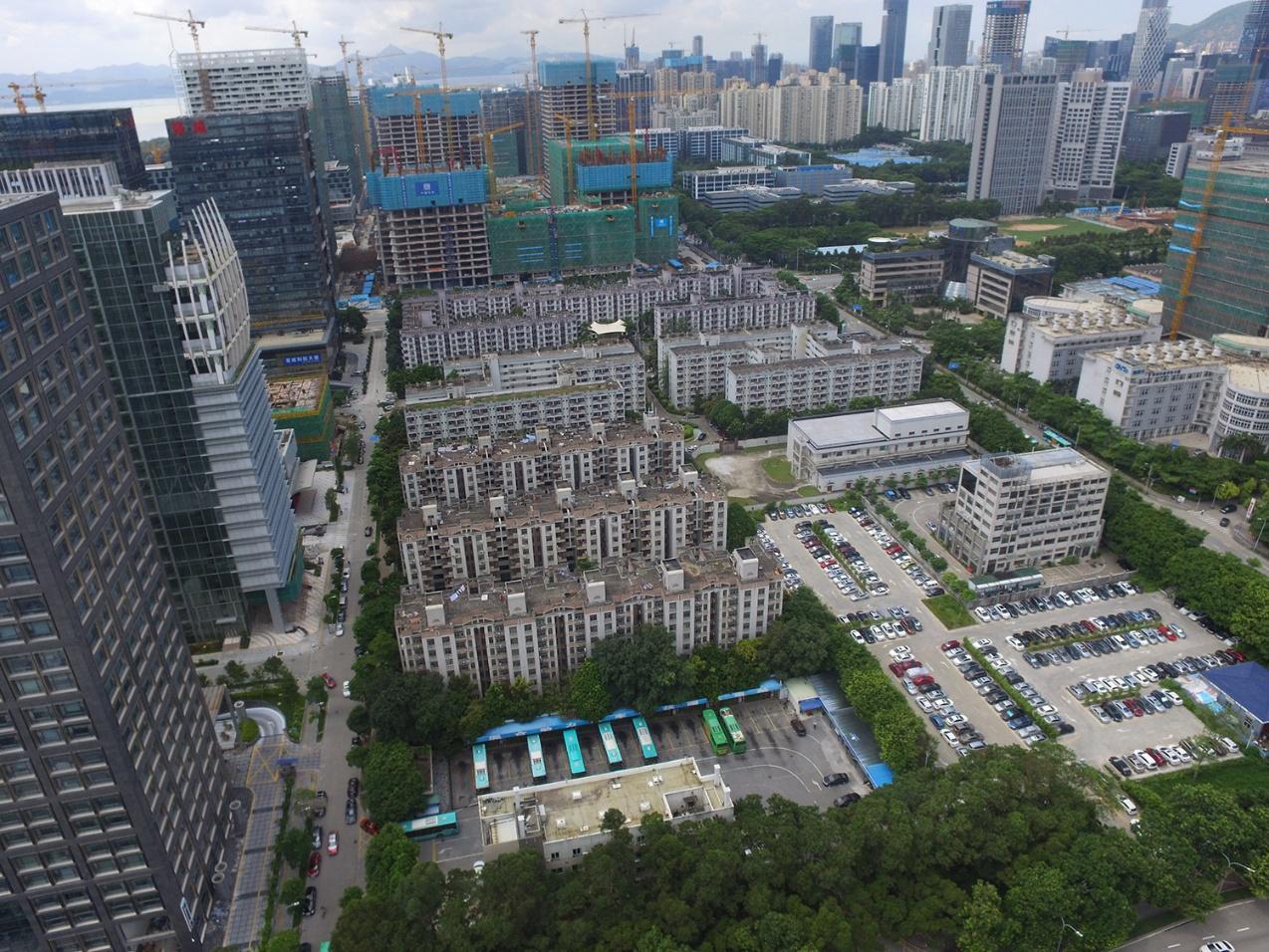
In photography, the P3S camera is almost as good as the P3P and P3A models. The updated firmware allows both P3P and P3S to shoot in the resolution of 2.7K * 1.5K. Of course, they do not reach the 4K resolution of the P3P model, but let's be honest: now not all monitors with a resolution of 2560x1440 have, not to mention 4K, YouTube doesn’t know how to spread videos of high resolution, and stock permissions to perform cropping to FullHD or Downscale should suffice.
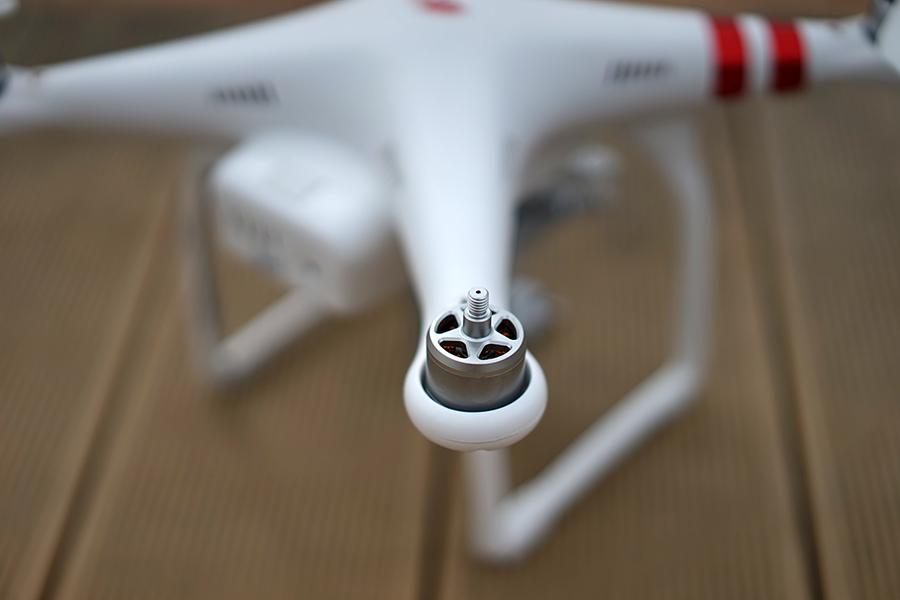
In the Phantom 3 Standard, DJI used a completely updated engine system. They differ from those installed in the P3P and P3A models both externally and internally. According to the navigation characteristics, the P3S aircraft is distinguished by increased maneuverability and speed of response to commands from the console, let's hope that we will see the corresponding improvements in some P3P + / P3A +, and even the younger model has so far made much more expensive toys in this regard.
The battery is the same, 4-cell lithium polymer. Capacity - 4480 mAh, that is, the same as that of the "older brothers". However, the updated propulsion system and the lower weight of this model made it possible to increase the flight duration to 25 minutes. Older models do not fly as much.
Another key feature of the P3S model is the use of DJI GO’s latest DJI applications. DJI is constantly creating and adding new features to the programs, the DJI GO application for the P3S model includes new functions “Automatic take-off” and “Automatic landing”, “Return home”, display of HD video in real time and manual control of the lens. In the near future, it was planned to add new flight control features to the firmware of the P3S model, such as “Follow the Operator” and “Landmark”, but while we were preparing the post at DJI we managed to post a new firmware. So these features should be available to everyone today.

The strengths of the whole line of third-generation “phantoms” remained with the P3S: it flies perfectly, removes well and knows how to be very smart when required. In addition to this, it is lighter, flies longer than its “elder brothers”, and knows how to fly faster and more actively maneuver. At the same time, the developers reduced the radius of autonomous work (however, the craftsmen will probably be able to modify the console and return the 2 KM drone of the declared radius, however, having lost the warranty;), removed the relatively expensive optical navigation module and the chip with GLONASS support. In sum, this allowed cutting off about $ 200 from the price of the average model, so the P3S should cost around $ 800 / € 920. Unfortunately, Russia, according to the established tradition, gets prices in Euros. :(
The P3S model itself was provided to us by the Skymec company official distributor of DJI in Russia, and the Phantom 3 Standard will be available for sale very soon. In the meantime, if you can’t wait at all, after spending about $ 1000 / € 1100 , you can take the average model, P3A. She flies on, knows how to fly neatly indoors. Removes also. The older version, the P3P model, is sometimes called the simplified version of “Inspire”: it has the same camera that can shoot 4K video like the Inspire 1 model, although P3P lacks dual control (when one person steers the copter, and the second - camera). The price tag, respectively, is still higher: $ 1,100 / € 1,400 . Why European prices are rising faster than American prices with a surcharge for Navotorts is a mystery to clean up the Gioconda's smile.
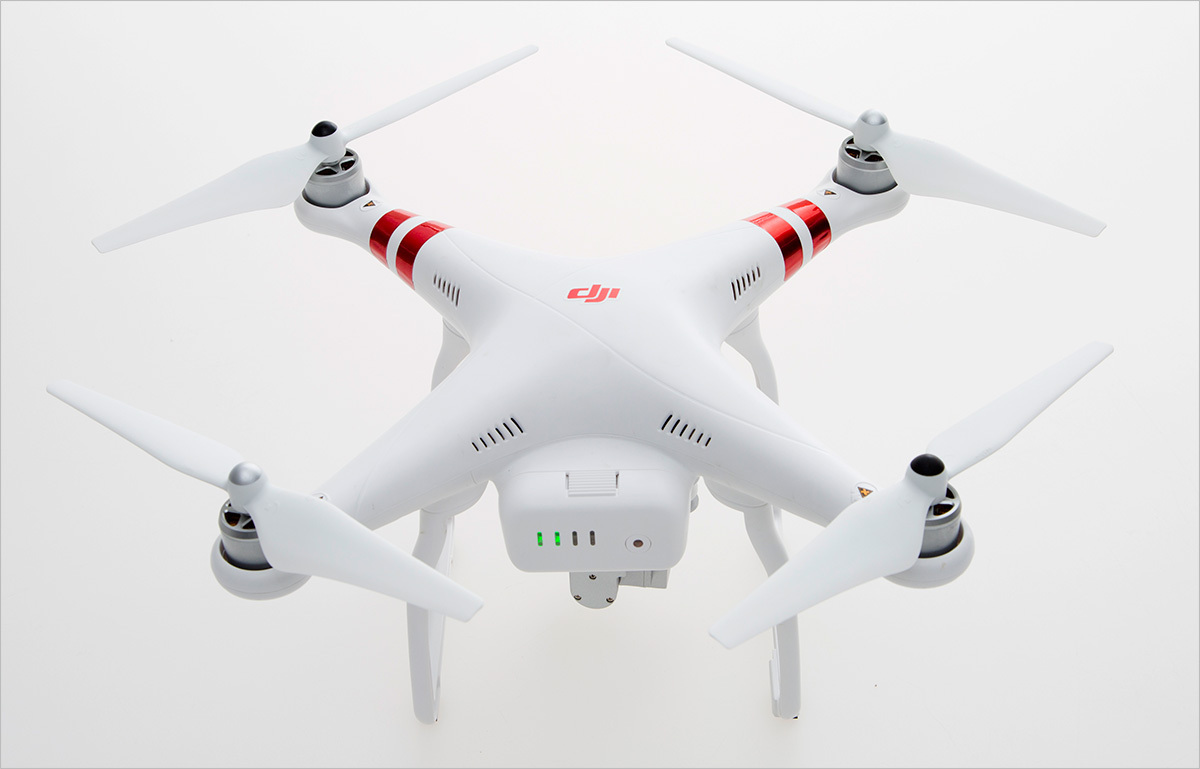
However, most of us will “play around” with the head and the younger version, which can do almost everything the same as the older models, and its price is very, very democratic for such a set of characteristics, it remains only to wait for it will appear in our stores.
Stay in touch and do not stand under the screw!

Meet the analysis of the entire generation of Phantom 3, a comparison of models, their features and a small overview of the most affordable version of the Phantom 3 Standard.
Phantom 3 Standard
The addition to the popular Phantom 3 series happened not so long ago: the new model Phantom 3 Standard (P3S) differs from its “older brothers” by an acceptable price - $ 799 / € 919 and new features that made it available to a wide audience. We were able to compare the new product with the predecessors Phantom 3 Professional (P3P) and Phantom 3 Advanced (P3A).
')

Equipment
DJI obviously learned from Apple. And the minimalist design, and content, all to match the giant of Cupertino:

Inside - the quadcopter itself, radio equipment, a set of screws (and a small repair kit with the tool) ...


... And, of course, the charger with the user manual. For, in fact, the beginning of the flight is enough to install the screws, but familiarity with the quadcopter should begin with reading the instructions, in order to avoid any falls of Gidenburg in small scales.

"Lightweight" version

The P3S model differs from the other products of its series in the absence of the technology of the optical orientation system and the GLONASS module. The refusal of additional electronic electronics allowed us to simplify the drone itself and the control panel, almost without affecting the basic operational characteristics.
New (or not;) remote control
The remote control for the P3S model is somewhat more compact and easier when compared with the similar controller of the P3P and P3A models. The basis (that is, the case and part of the filling) was borrowed from the remote control of the old version of DJI Vision +, so with ergonomics and capabilities everything is fine.

The sticks, switching buttons and side wheels for controlling the suspension remained in place, but the “stand”, the method of attaching and connecting the smartphone to the console, and the number of antennas reduced to one changed:

Unlike the P3P and P3A models, you do not need to use a USB cable to connect the remote control to a mobile device, wireless Wi-Fi connection is used.

The P3S model supports 720p HD video transmission in real time at a distance of up to 1 km in the FCC version and up to 500 m in the CE version. The advantage in comparison with the Phantom 2 Vision + (P2V +) model is that the P3S remote control has a built-in Wi-Fi signal amplifier, which is connected to the remote battery. Thanks to this remote it is easier to use, because you do not need to charge the elements separately.

New camera
Surprisingly, in terms of the camera, the P3S model at the time of release was somewhat superior to the more expensive P3A (the currently updated firmware for the P3A equalized their capabilities in video resolution). Standard can shoot HD video with a resolution of 2704x1520 pixels, which is practically not found on devices of this level and price. Only the P3P model has a significant increase in resolution and quality of shooting (it can shoot video in 4K), but its price tag is completely different.

The P3S is equipped with a 94⁰ wide angle lens with a f / 2.8 aperture.
The maximum resolution when photographing - 12 megapixels in JPEG or DNG (RAW). Normal viewing angle and good optics make it possible to achieve a decent quality of shooting.
The pictures show the same scene taken in Auto mode using the P3S, P3P, P3A, P2V + and GoPro Hero 4 Black models:

↑ P3P

↑ P3A

↑ P3S

↑ P2V +

↑ Gopro Hero 4 Black
The photos taken by the Phantom 3 series cameras are designed in the same style, it’s hard to tell which picture was taken with P3S and which one with P3A, if you don’t get frames up to 1-to-1.
The drone of the previous generation and GoPro have super-wide-angle lenses, because of which both the field of view and the nature of the distortions make the appropriate adjustments to the composition, and if we take the central part of the frame for comparison with the older generation, we will see the corresponding loss in detail. In addition to the characteristic distortions, both cameras consider exposure a little differently and are prone to overexposure. And if the details can be extracted from underlights (albeit with noise) (which, given the shooting in RAW with Phantom 3, is easier than any other editor), then the potential overexposures will not extract information.
In the field of photography, the “younger” device in the lineup is almost as good as the P3P and P3A models.

If we take the same fragment from all frames of different cameras, then the differences in quality become obvious. The image of the GoPro camera shows that the top edge of the building is blurred, and the overall resolution of the image is clearly lower than the others. A striking example is brickwork / cladding panels: their texture looks good even on the old P2V +, not to mention the P3 in various versions. In addition, the camera JPEG settings with excessive clarity spoil the texture of the P2V +, and wide-angle optics introduce additional loss in picture quality at the edges of the frame. The “Phantoms” of the third generation do not have such a problem: the bricks are visible, and with the resolution, the order, and there is no noticeable sharpe. Especially if you manually display the RAWs.
Here are some more pictures taken with the P3S:



In photography, the P3S camera is almost as good as the P3P and P3A models. The updated firmware allows both P3P and P3S to shoot in the resolution of 2.7K * 1.5K. Of course, they do not reach the 4K resolution of the P3P model, but let's be honest: now not all monitors with a resolution of 2560x1440 have, not to mention 4K, YouTube doesn’t know how to spread videos of high resolution, and stock permissions to perform cropping to FullHD or Downscale should suffice.
And instead of the heart - a fiery motor

In the Phantom 3 Standard, DJI used a completely updated engine system. They differ from those installed in the P3P and P3A models both externally and internally. According to the navigation characteristics, the P3S aircraft is distinguished by increased maneuverability and speed of response to commands from the console, let's hope that we will see the corresponding improvements in some P3P + / P3A +, and even the younger model has so far made much more expensive toys in this regard.
The battery is the same, 4-cell lithium polymer. Capacity - 4480 mAh, that is, the same as that of the "older brothers". However, the updated propulsion system and the lower weight of this model made it possible to increase the flight duration to 25 minutes. Older models do not fly as much.
Unique mobile apps
Another key feature of the P3S model is the use of DJI GO’s latest DJI applications. DJI is constantly creating and adding new features to the programs, the DJI GO application for the P3S model includes new functions “Automatic take-off” and “Automatic landing”, “Return home”, display of HD video in real time and manual control of the lens. In the near future, it was planned to add new flight control features to the firmware of the P3S model, such as “Follow the Operator” and “Landmark”, but while we were preparing the post at DJI we managed to post a new firmware. So these features should be available to everyone today.
What do we have in the end?

The strengths of the whole line of third-generation “phantoms” remained with the P3S: it flies perfectly, removes well and knows how to be very smart when required. In addition to this, it is lighter, flies longer than its “elder brothers”, and knows how to fly faster and more actively maneuver. At the same time, the developers reduced the radius of autonomous work (however, the craftsmen will probably be able to modify the console and return the 2 KM drone of the declared radius, however, having lost the warranty;), removed the relatively expensive optical navigation module and the chip with GLONASS support. In sum, this allowed cutting off about $ 200 from the price of the average model, so the P3S should cost around $ 800 / € 920. Unfortunately, Russia, according to the established tradition, gets prices in Euros. :(
The P3S model itself was provided to us by the Skymec company official distributor of DJI in Russia, and the Phantom 3 Standard will be available for sale very soon. In the meantime, if you can’t wait at all, after spending about $ 1000 / € 1100 , you can take the average model, P3A. She flies on, knows how to fly neatly indoors. Removes also. The older version, the P3P model, is sometimes called the simplified version of “Inspire”: it has the same camera that can shoot 4K video like the Inspire 1 model, although P3P lacks dual control (when one person steers the copter, and the second - camera). The price tag, respectively, is still higher: $ 1,100 / € 1,400 . Why European prices are rising faster than American prices with a surcharge for Navotorts is a mystery to clean up the Gioconda's smile.

However, most of us will “play around” with the head and the younger version, which can do almost everything the same as the older models, and its price is very, very democratic for such a set of characteristics, it remains only to wait for it will appear in our stores.
Stay in touch and do not stand under the screw!

Source: https://habr.com/ru/post/368275/
All Articles